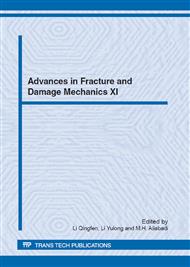p.145
p.149
p.153
p.157
p.161
p.165
p.169
p.173
p.177
Geometrical Parameters Influencing a Hybrid Mechanical Coupling
Abstract:
Coupling techniques for components of different materials is spreading in mechanical industry; the test case studied in this work deals with the connection of an aluminium alloy component with a carbon fibre composite one. In particular, the first component is made of an aluminium-zinc alloy and exhibits an isotropic behaviour, while the second is made of a carbon fibre reinforced polymer (CFRP) and shows a strongly anisotropic behaviour; both materials are widely used in engineering applications. A titanium bolt connects the parts. This work is focused on the influence of the geometrical parameters which characterize the coupling between the components. In particular, a study has been carried out on the influence of the shank-hole clearance, the bolt head size, the bolt preload and the shape of the bolt head. A numerical model has been built and statically tested; the results have been compared with the experimental ones from literature. Once validated, the same numerical model has been used to evaluate the performance of the joint in presence of a change of the above mentioned characteristic parameters. The required numerical analyses have been performed using Abaqus/Standard® numerical code.
Info:
Periodical:
Pages:
161-164
Citation:
Online since:
November 2012
Authors:
Keywords:
Price:
Сopyright:
© 2013 Trans Tech Publications Ltd. All Rights Reserved
Share:
Citation:


